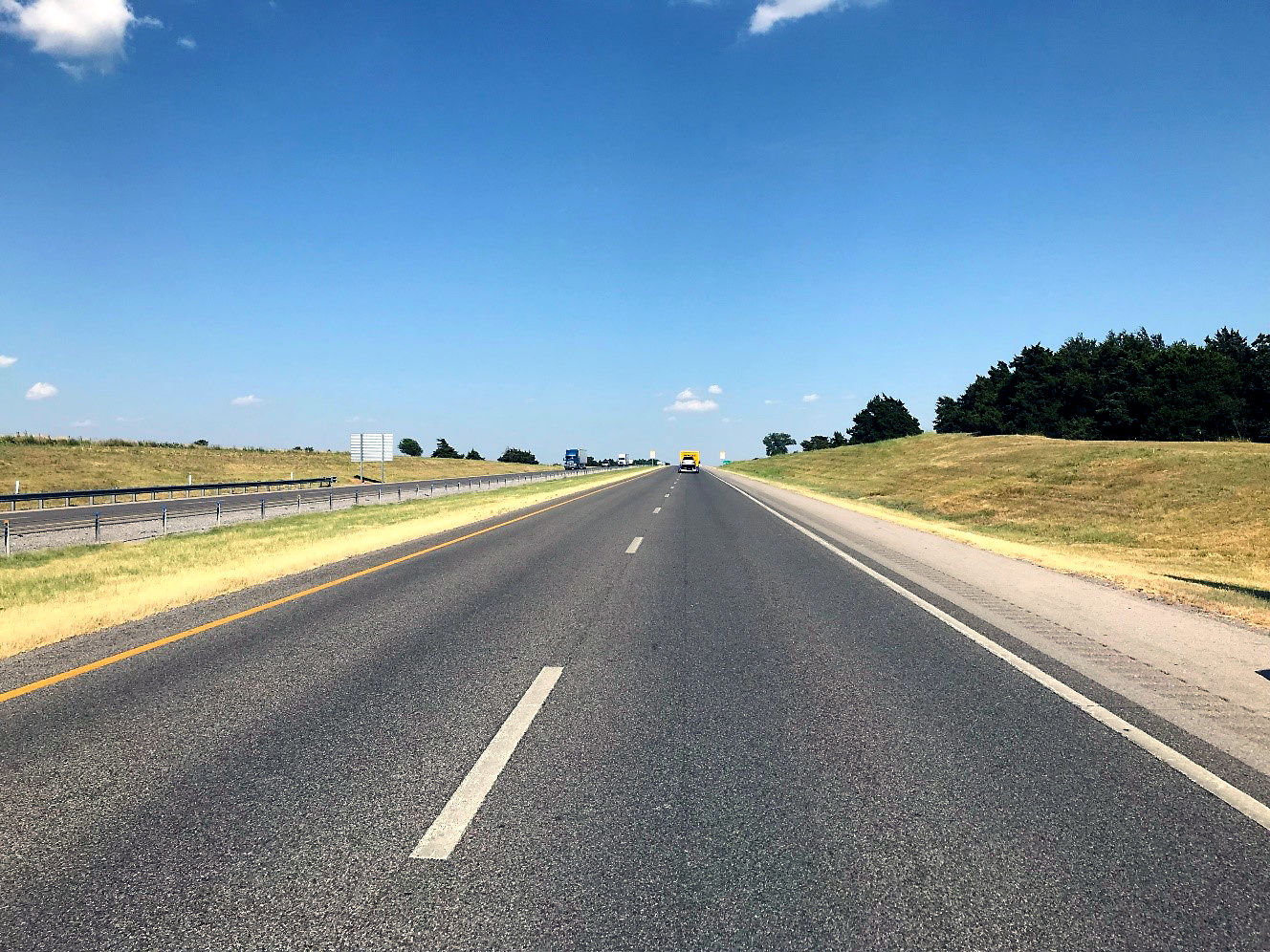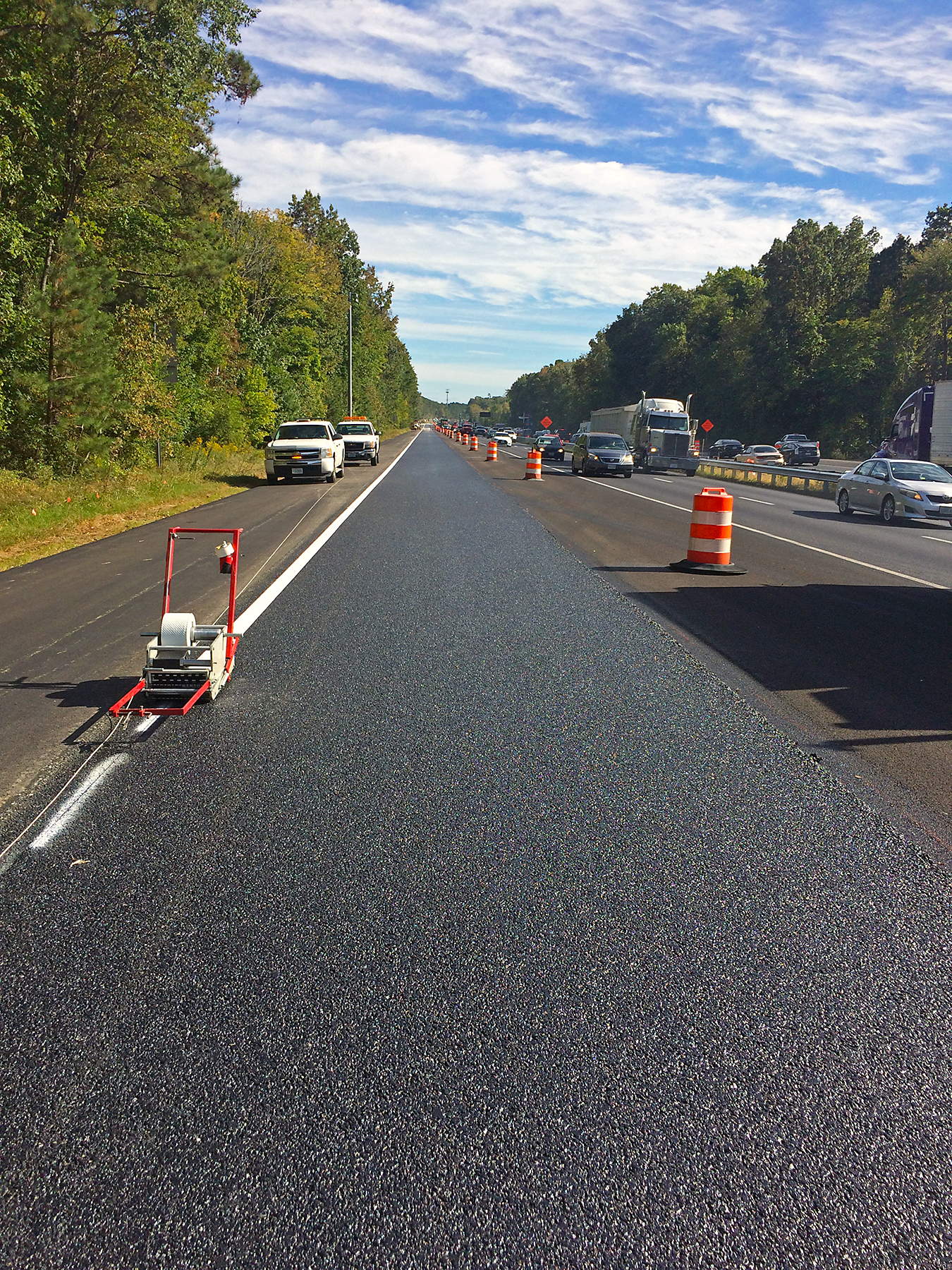
States Report Success with Highly Modified Asphalt
While it takes years to know if an overlay, specification, or technique will prove effective in the pavement world, the wait is over for news about highly modified asphalt (HiMA), as several agencies report success. HiMA contains more than two times the polymer content of traditional modified grades, which makes the binder behave more like rubber and enhances cracking resistance and rutting performance. This versatile product can be used in high-performance thin overlays (HPTO), stone matrix asphalt (SMA), crack attenuating mixtures, and open-graded friction courses—all of which are part of the FHWA targeted overlay pavement solutions (TOPS) Every Day Counts round six (EDC-6) initiative.
Oklahoma
A decade ago, the Oklahoma Department of Transportation (ODOT) used mill and overlay with HiMA on a 2-mile stretch of Interstate 40 (I-40) west of Oklahoma City. The I-40 section endures more than 25,000 vehicles daily, 30 percent of which are trucks. Ten years after receiving the new overlay, the I-40 span’s international roughness index averaged 50 inches per mile, which is smooth enough to result in ride quality bonuses for new construction in some States.

This stretch of I-40 in Oklahoma received a mill and overlay with HiMA in 2012.
Credit: Gary Fitts, Kraton Polymers U.S.Conventional polymer concentration that exceeds 3 percent becomes more challenging to produce in the plant and less workable for the paving crew, but HiMA is a unique binder. The product can be used in significantly larger amounts than conventional polymer modifiers—up to 7.5 to 8 percent while retaining workability. The result is a more durable pavement that stands up to truck traffic while permitting thinner sections. While a highly polymerized mix is more expensive, reducing the required thickness can offset the cost and provide a longer-lasting pavement.
New York City
The New York City Department of Transportation (NYC DOT) typically resurfaces major arterial streets every 2 years, but an HPTO project with HiMA on 1st Avenue has provided significantly longer life.
There were two needs—repair a roadway in poor condition from years of utility projects and add lanes to accommodate buses and bicycles. This would require the costly rehabilitation of 53 city blocks and 11,000 tons of asphalt mix. Conventional pavement design practice would have required the closure of several blocks and intolerable disruption to residents and city leaders. Also, curb and utility cover requirements prohibit the use of thick asphalt overlay, and any substantial removal of surface materials could damage underlying utilities.
The agency decided to place two exploratory HPTO sections on two blocks of 1st Avenue in 2012. A year later, the sections were in very good condition, so NYC DOT decided to move forward with an HPTO approach for the entire project conducted at night with minimal traffic disruption. The construction included micro-milling the existing surface, joint sealing and patching with a hot-applied polymer material, using a pavement fabric, and installing a 1.5-inch HPTO with HiMA. According to the NYC DOT website, the roadway is still in good condition 9 years later.
Virginia
The Virginia Transportation Research Council (VTRC), the research division of Virginia DOT, published a report detailing HiMA laboratory and field performance evaluations. VTRC initiated the study in 2014 to evaluate HiMA constructability, laboratory performance, and initial field performance. As part of this effort, in 2015 VDOT placed dense-graded and SMA overlays with HiMA over existing jointed concrete pavement and cracked asphalt pavements to mitigate reflective cracking. This project was the first in the United States to include an HiMA binder in an SMA mix. The objective was to assess the viability of using HiMA mixtures in Virginia as a reflective crack mitigation technique or as a tool for increased crack resistance on high-volume facilities.
Researchers concluded that the HiMA test sections showed the most promising performance 5 years after construction (2015 to 2020) regardless of traffic level and the pre-existing pavement conditions compared to conventional polymer-modified asphalt (PMA). They determined that HiMA extended the life of pavements by approximately 34 percent compared to PMA.

In 2017, Virginia DOT placed SMA HiMA in the right lane and kept conventional SMA in the left lane as a control for a field evaluation.
Credit: Virginia Department of TransportationFHWA’s Tim Aschenbrener, an EDC-6 TOPS team co-lead, said that, in addition to these promising performance reports, accelerated performance for HiMA was observed over multiple 3-year research cycles on the National Center for Asphalt Technology Pavement Test Track. “The HiMA and other TOPS overlays not only maximize previous investments,” said Aschenbrener, “they also reduce user delays thanks to fewer work zones due to the extended service life of pavement structures.”
The TOPS team has developed several resources to help agencies learn more about HiMA, including a webinar, a case study on Florida DOT HiMA projects, and a one-page fact sheet.
—MORE INFORMATION
Visit the TOPS webpage for additional resources.
Contact Tim Aschenbrener (asphalt) or Robert Conway (concrete), FHWA Office of Infrastructure Pavement Materials Team, to learn more about TOPS.
Notice: The U.S. Government does not endorse products or manufacturers. Trademarks or manufacturers’ names appear in this article only because they are considered essential to the objective of the document.
Recommended Citation: U.S. Department of Transportation, Federal Highway Administration - Washington, DC (2022) Innovator Newsletter, November/December 2022, Volume 16 (93). https://doi.org/10.21949/1521886
- Cover
- ConnectU2Jobs Graduate Shares Program Experience to Inspire Others
- Hawaii DOT Gets Fast and Furious Installing Raised Crosswalks
- States Report Success with Highly Modified Asphalt
- Innovations Help States Deliver Award-Winning Projects
- States Innovate
- Crash Responder Safety Week
- About Innovator



